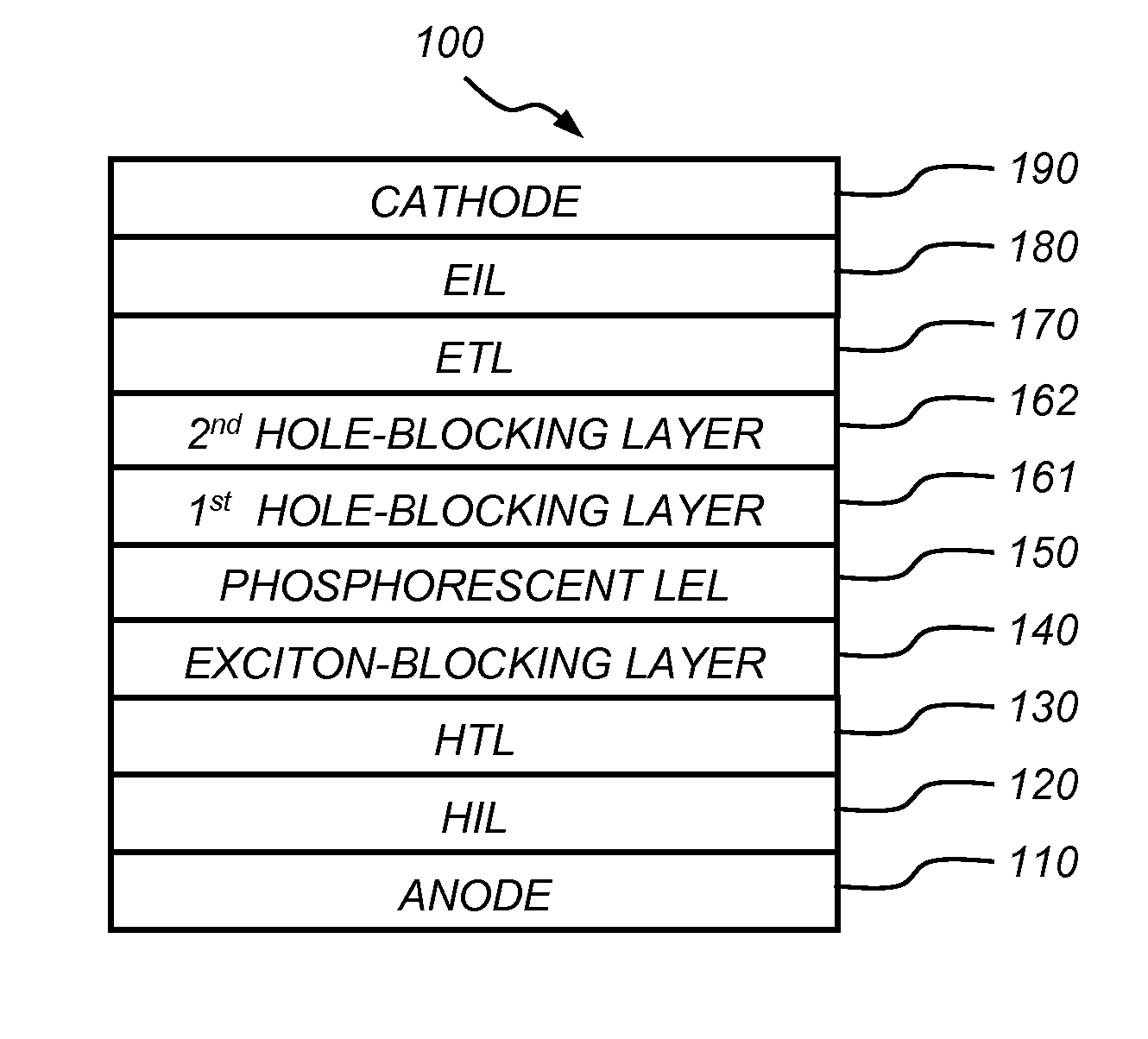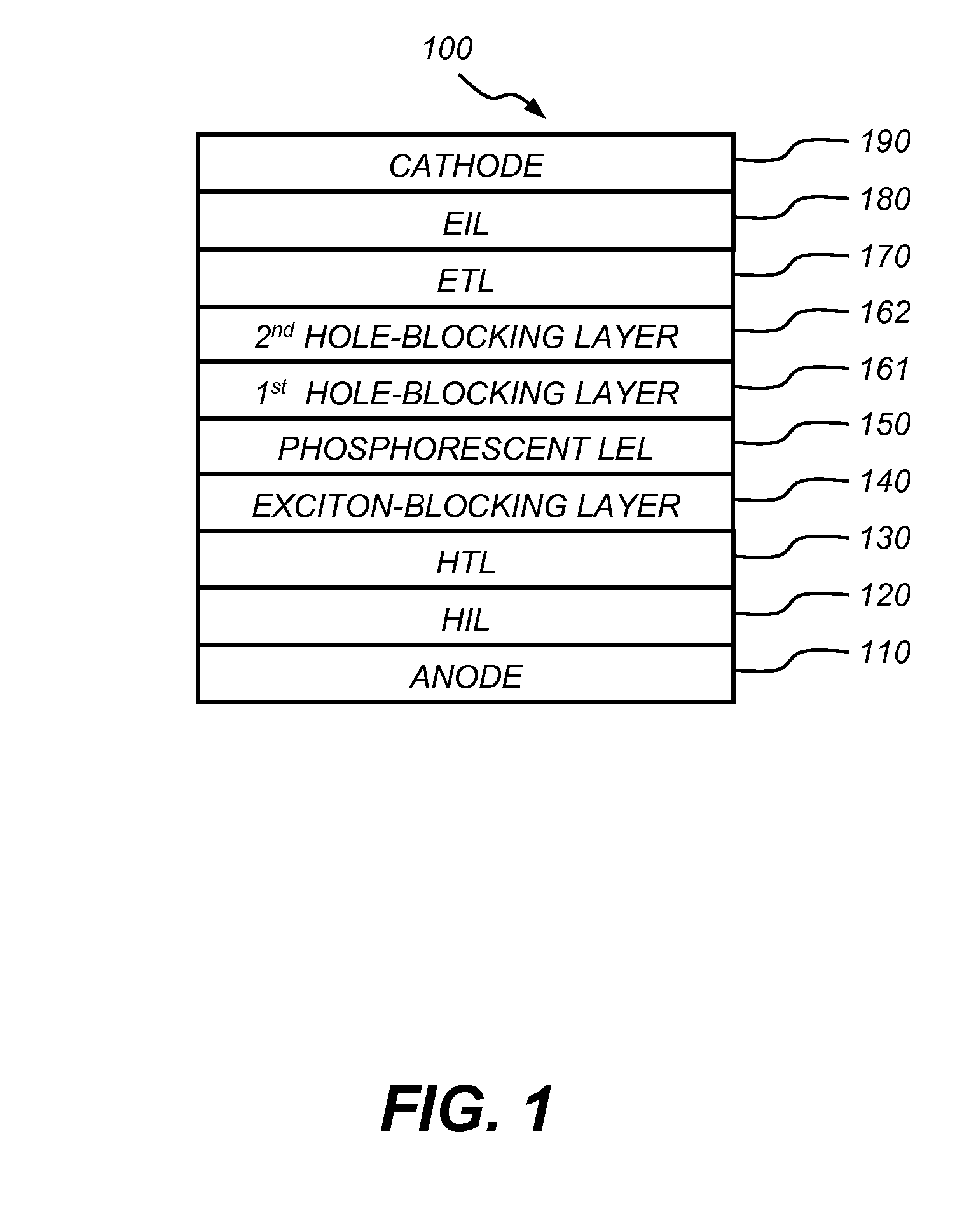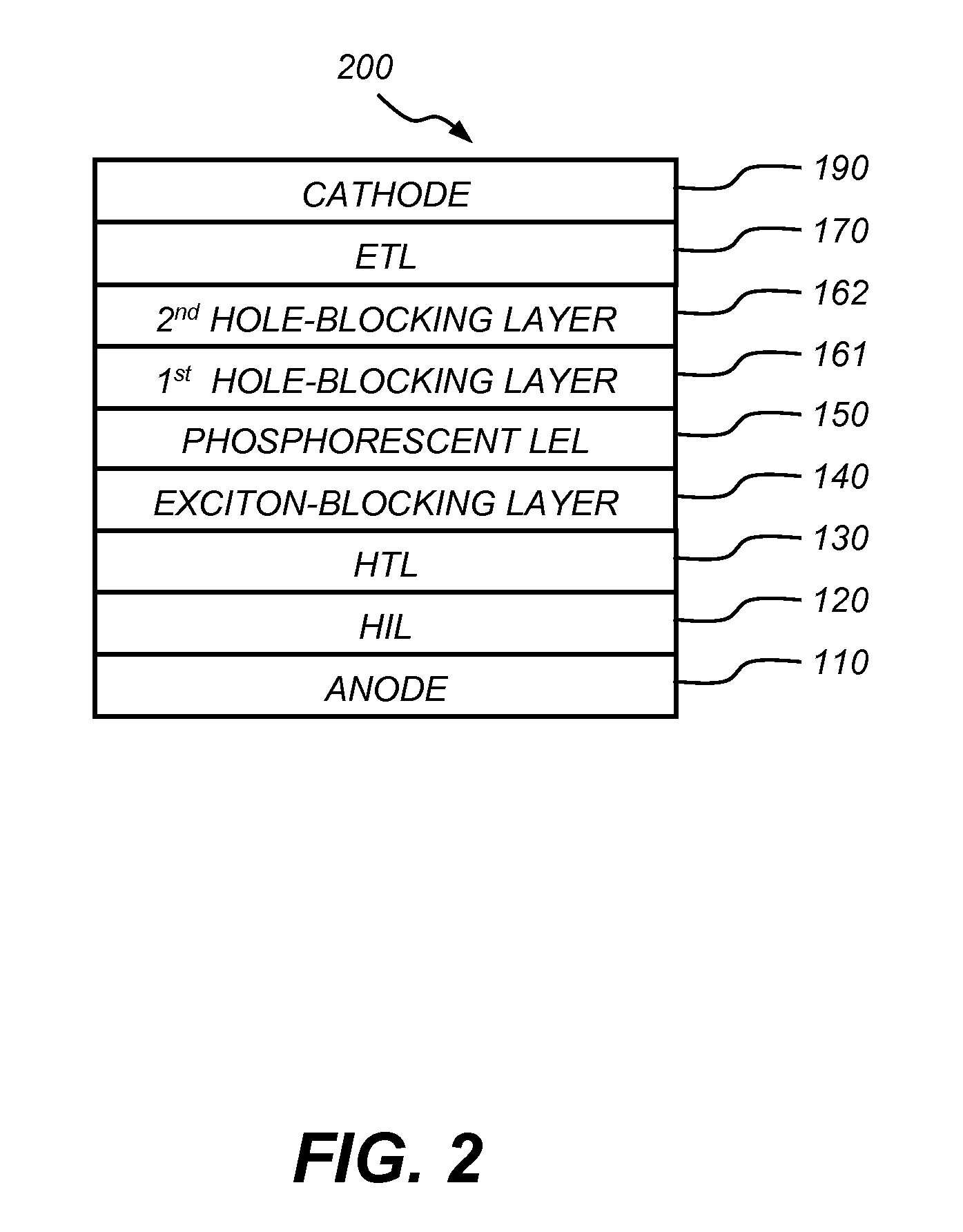Phosphorescent OLED having double hole-blocking layers
a technology of phosphorescent oled and hole-blocking layer, which is applied in the direction of luminescent compositions, electrical devices, chemistry apparatus and processes, etc., can solve the problems of difficult to find or design such a hole-blocking material, and one hbl cannot fully improve the device performan
- Summary
- Abstract
- Description
- Claims
- Application Information
AI Technical Summary
Benefits of technology
Problems solved by technology
Method used
Image
Examples
examples
[0289]The following examples are presented for a further understanding of the present invention. The reduction potential and the oxidation potential of the materials were measured using a Model CHI660 electrochemical analyzer (CH Instruments, Inc., Austin, Tex.) with the method as discussed before. During the fabrication of OLEDs, the thickness of the organic layers and the doping concentrations were controlled and measured in situ using calibrated thickness monitors built in an evaporation system (Made by Trovato Mfg., Inc., Fairport, N.Y.). The EL characteristics of all the fabricated devices were evaluated using a constant current source (KEITHLEY 2400 SourceMeter, made by Keithley Instruments, Inc., Cleveland, Ohio) and a photometer (PHOTO RESEARCH SpectraScan PR 650, made by Photo Research, Inc., Chatsworth, Calif.) at room temperature. Operational lifetime (or stability) of the devices was tested at the room temperature and at an initial luminance of 1,000 cd / m2 by driving a c...
examples 1-3
[0290]The preparation of a conventional OLED (Device 1) is as follows: A ˜1.1 mm thick glass substrate coated with a transparent ITO conductive layer was cleaned and dried using a commercial glass scrubber tool. The thickness of ITO is about 22 nm and the sheet resistance of the ITO is about 68 Ω / square. The ITO surface was subsequently treated with oxidative plasma to condition the surface as an anode. A layer of CFx, 1 nm thick, was deposited on the clean ITO surface as the anode buffer layer by decomposing CHF3 gas in an RF plasma treatment chamber. The substrate was then transferred into a vacuum deposition chamber for deposition of all other layers on top of the substrate. The following layers were deposited in the following sequence by evaporation from a heated boat under a vacuum of approximately 10−6 Torr:
[0291]a) a HTL, 100 nm thick, including N,N′-di-1-naphthyl-N,N′-diphenyl-4,4′-diaminobiphenyl (NPB);
[0292]b) an EXBL, 10 nm thick, including 4-(9H-carbazol-9-yl)-N,N-bis[4-...
examples 4-5
[0321]A comparative phosphorescent OLED (Device 4) is fabricated with the same method and the same layer structure as Example 1.
[0322]Device 4 is denoted as: ITO / 100 nm NPB / 10 nm TCTA / 20 nm CBP:6% Ir(ppy)3 / 25 nm Bphen / 15 nm Bphen:1.0% Li / 100 nm Al. The EL performance of the device is summarized in Table 1.
[0323]An inventive phosphorescent OLED (Device 5) is fabricated with the same method and the same layer structure as Example 4, except that the there are two HBLs in the device. The layer structure is:
[0324]a) a HTL, 100 nm thick, including NPB;
[0325]b) an EXBL, 10 nm thick, including TCTA;
[0326]c) a LEL, 20 nm thick, including CBP doped with 6% of Ir(ppy)3 by volume;
[0327]d) a first HBL, 5 nm thick, including Formula (X-1) (HOMO energy <−6.1 eV, LUMO energy=−2.73 eV, triplet energy=2.95 eV);
[0328]e) a second HBL, 20 nm thick, including Bphen;
[0329]f) an ETL, 15 nm thick, including Bphen doped with about 1.0% of lithium; and
[0330]g) a cathode: approximately 100 nm thick, including ...
PUM
| Property | Measurement | Unit |
|---|---|---|
| thickness | aaaaa | aaaaa |
| thickness | aaaaa | aaaaa |
| thick | aaaaa | aaaaa |
Abstract
Description
Claims
Application Information
 Login to View More
Login to View More - R&D
- Intellectual Property
- Life Sciences
- Materials
- Tech Scout
- Unparalleled Data Quality
- Higher Quality Content
- 60% Fewer Hallucinations
Browse by: Latest US Patents, China's latest patents, Technical Efficacy Thesaurus, Application Domain, Technology Topic, Popular Technical Reports.
© 2025 PatSnap. All rights reserved.Legal|Privacy policy|Modern Slavery Act Transparency Statement|Sitemap|About US| Contact US: help@patsnap.com



